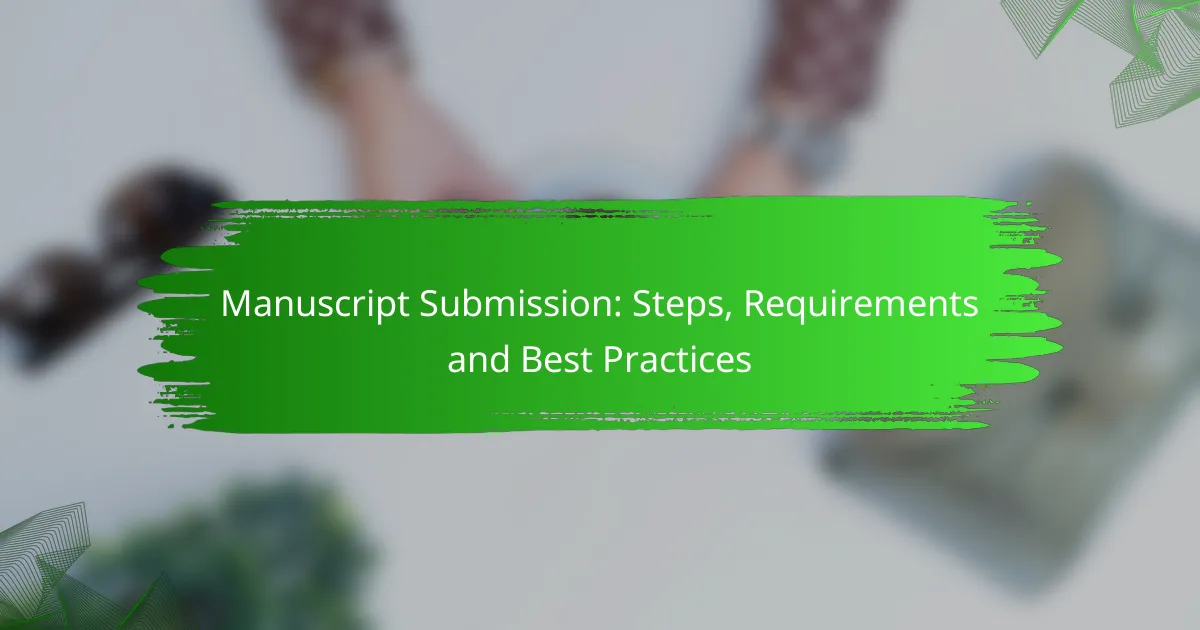Editors play a vital role in the content creation process, ensuring quality and relevance while managing teams and engaging audiences. Their decision-making is informed by data analysis and adherence to editorial guidelines, which helps maintain the integrity of published materials. The choices they make not only influence the effectiveness of content but also impact a publication’s reputation and audience trust.

What are the key responsibilities of editors in the UK?
Editors in the UK play a crucial role in shaping content by ensuring its quality, making editorial decisions, managing teams, engaging audiences, and adhering to regulations. Their responsibilities are essential for maintaining the integrity and effectiveness of published materials.
Content quality assurance
Content quality assurance involves reviewing and refining written materials to meet established standards. Editors assess grammar, style, coherence, and factual accuracy, ensuring that the content aligns with the publication’s voice and objectives.
To maintain high quality, editors often create style guides and checklists that outline expectations for writers. Regular training sessions can also help writers understand these standards better.
Editorial decision-making
Editorial decision-making is the process of determining what content gets published and how it is presented. Editors evaluate submissions based on relevance, audience interest, and alignment with the publication’s mission.
They must balance creativity with practicality, often considering factors like budget constraints and deadlines. Effective decision-making requires strong analytical skills and a clear understanding of the target audience.
Team management
Team management involves overseeing writers, freelancers, and other staff to ensure smooth operations. Editors assign tasks, set deadlines, and provide feedback to enhance team performance and cohesion.
Building a supportive environment is crucial; regular meetings and open communication channels can foster collaboration and innovation among team members.
Audience engagement
Audience engagement is about connecting with readers and understanding their preferences. Editors analyze audience feedback, monitor trends, and adjust content strategies to enhance reader interaction and satisfaction.
Utilizing social media and analytics tools can help editors gauge audience interests and tailor content accordingly, ensuring it resonates with the intended demographic.
Compliance with regulations
Compliance with regulations ensures that published content adheres to legal and ethical standards. Editors must be aware of copyright laws, data protection regulations, and industry-specific guidelines to avoid legal issues.
Regular training on compliance topics is essential for editors and their teams to stay informed about changes in regulations and best practices in the industry.

How do editors make decisions?
Editors make decisions through a combination of data analysis, adherence to editorial guidelines, and collaboration with writers. These factors help ensure that content is relevant, accurate, and engaging for the target audience.
Data-driven analysis
Data-driven analysis involves evaluating metrics such as reader engagement, traffic patterns, and demographic insights. Editors often use tools like Google Analytics to assess which topics resonate most with their audience.
By analyzing this data, editors can prioritize content that is likely to perform well, adjusting their strategies based on trends and reader feedback. For example, if a particular article format consistently attracts high engagement, editors may choose to replicate that style in future pieces.
Editorial guidelines adherence
Adhering to editorial guidelines ensures consistency and quality across all published content. These guidelines typically cover aspects such as tone, style, and factual accuracy, which are crucial for maintaining the publication’s credibility.
Editors must regularly review and update these guidelines to reflect current standards and audience expectations. For instance, a publication may adjust its language to be more inclusive or to align with evolving industry terminology.
Collaboration with writers
Collaboration with writers is essential for producing high-quality content. Editors work closely with writers to provide feedback, clarify objectives, and ensure that the final product aligns with the publication’s goals.
Effective communication can enhance the writing process, allowing for brainstorming sessions and constructive critiques. Editors should encourage open dialogue, which can lead to innovative ideas and improved content quality.

What is the impact of editorial decisions?
Editorial decisions significantly shape the direction and effectiveness of content, influencing how it resonates with audiences and affects a publication’s reputation. These choices can enhance or undermine trust, engagement, and overall strategy.
Influence on audience perception
Editorial decisions directly affect how audiences perceive a publication’s voice, values, and reliability. For instance, choosing to highlight certain topics while downplaying others can create a specific narrative that resonates with particular demographics.
To maintain a positive audience perception, editors should ensure content aligns with the interests and values of their target audience. Regularly analyzing audience feedback and engagement metrics can help refine this approach.
Effect on publication credibility
The credibility of a publication is often tied to the quality and integrity of its editorial decisions. Consistent fact-checking, balanced reporting, and ethical considerations are crucial in building and maintaining trust with readers.
Editors must be vigilant about potential biases and strive for objectivity. A single misstep, such as publishing misleading information, can lead to significant damage to a publication’s reputation and reader trust.
Impact on content strategy
Editorial decisions play a vital role in shaping a publication’s content strategy, guiding what topics are prioritized and how they are presented. These choices can dictate the tone, style, and format of content, influencing overall engagement and reach.
To develop an effective content strategy, editors should regularly assess market trends and audience preferences. This can involve creating editorial calendars that align with key events or themes relevant to the audience, ensuring timely and engaging content delivery.

What skills are essential for successful editors?
Successful editors must possess a blend of strong communication skills, critical thinking, and project management abilities. These skills enable them to effectively guide content creation, ensure quality, and meet deadlines.
Strong communication skills
Editors need strong communication skills to convey their feedback clearly and constructively. This involves not only writing well but also being able to articulate ideas and suggestions during discussions with writers and other team members.
Active listening is equally important, as it helps editors understand the perspectives of others and foster collaborative environments. Regular check-ins and feedback sessions can enhance communication and lead to better outcomes.
Critical thinking
Critical thinking is essential for editors to evaluate content effectively. This skill allows them to assess the clarity, coherence, and relevance of the material, ensuring it aligns with the intended audience and purpose.
Editors should be able to identify gaps in logic or argumentation and suggest improvements. Utilizing tools like checklists for content evaluation can help streamline this process and enhance the quality of the final product.
Project management
Project management skills are crucial for editors to oversee the entire content production process. This includes setting timelines, coordinating with writers, and ensuring that all tasks are completed on schedule.
Effective project management can be achieved by using tools like Gantt charts or project management software to track progress and deadlines. Prioritizing tasks and delegating responsibilities can also help manage workloads efficiently, leading to timely publication of content.

What tools do editors use in their workflow?
Editors utilize a variety of tools to streamline their workflow, enhance collaboration, and ensure content quality. These tools range from content management systems to editing software, each serving specific functions in the editing process.
Content Management Systems (CMS)
Content Management Systems (CMS) are essential for editors to organize, publish, and manage digital content efficiently. Popular CMS platforms like WordPress and Drupal allow editors to easily collaborate with writers and track changes in real-time.
When selecting a CMS, consider factors such as user-friendliness, scalability, and integration capabilities with other tools. A well-chosen CMS can significantly reduce the time spent on content updates and revisions.
Editing Software
Editing software, such as Grammarly or Hemingway, assists editors in refining text for clarity, grammar, and style. These tools provide instant feedback, helping to catch errors that may be overlooked during manual reviews.
Using editing software can enhance the overall quality of content, but it’s important to remember that these tools should complement, not replace, a human editor’s judgment. Relying solely on software may lead to overlooking nuanced language or context-specific issues.
Collaboration Tools
Collaboration tools like Google Docs and Slack facilitate communication and feedback between editors and writers. These platforms allow for real-time editing and discussions, making it easier to implement changes and share ideas.
Choosing the right collaboration tool depends on your team’s size and workflow preferences. Ensure that the tool you select supports version control and easy access to past edits, which can be crucial for maintaining content integrity.
Analytics and SEO Tools
Analytics and SEO tools, such as Google Analytics and SEMrush, help editors assess content performance and optimize for search engines. Understanding metrics like page views and bounce rates can guide content strategy and improve audience engagement.
Incorporating SEO tools into the editing process can enhance visibility and reach. Editors should focus on keyword optimization and content relevance to ensure that articles meet both user needs and search engine criteria.







